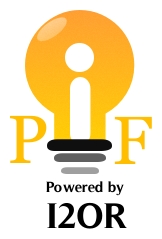Harmonic Mitigation Technique using Active Power Filter Controller for Textile Industry |
| ( Volume 7 Issue 5,May 2021 ) OPEN ACCESS |
| Author(s): |
Afthab Zacker Hussain, Jimmy Jain George, Vijay .N, William V Shelly |
| Keywords: |
|
Active Power Filter, Harmonic Analysis, Textile Industry, Total Harmonic Distortion, UCC28180 Controller. |
| Abstract: |
|
One of the major power quality issue that industries face is harmonic distortion. Non-linear loads are the major source of harmonics. Textile industries incorporate a large number of non-linear loads which introduces harmonics to the system and finally leads to waveform distortion. Harmonic glitches in the industry are produced from non-linear loads such as rectifiers, variable speed drives etc. The harmonics distortion is a form of electrical pollution that can cause problems for both utility and customers if the sum of the harmonics current increases above certain limits. Harmonics may cause a lot of complications such as improper measurement of the electricity meters, failure of protective devices, ageing, transmission lines additional losses, nuisance tripping of circuit breakers and damaging of electric devices. In this paper, an active power filter scheme is developed as a solution for harmonic distortion. The developed APF control scheme is based on a proportional feedback controller and a single phase voltage source full wave bridge rectifier. By reducing harmonics, the system efficiency can be made optimum. It avoids malfunctioning of equipment’s, reduces losses, heat, vibrations, maintains the power factor within the acceptable IEEE standard values and further reduces total harmonic distortion. |
 DOI :
DOI :
|
| Paper Statistics: |
| Cite this Article: |
| Click here to get all Styles of Citation using DOI of the article. |
 Click Here for
Click Here for Track Your Paper

 Call for Paper
Call for Paper
